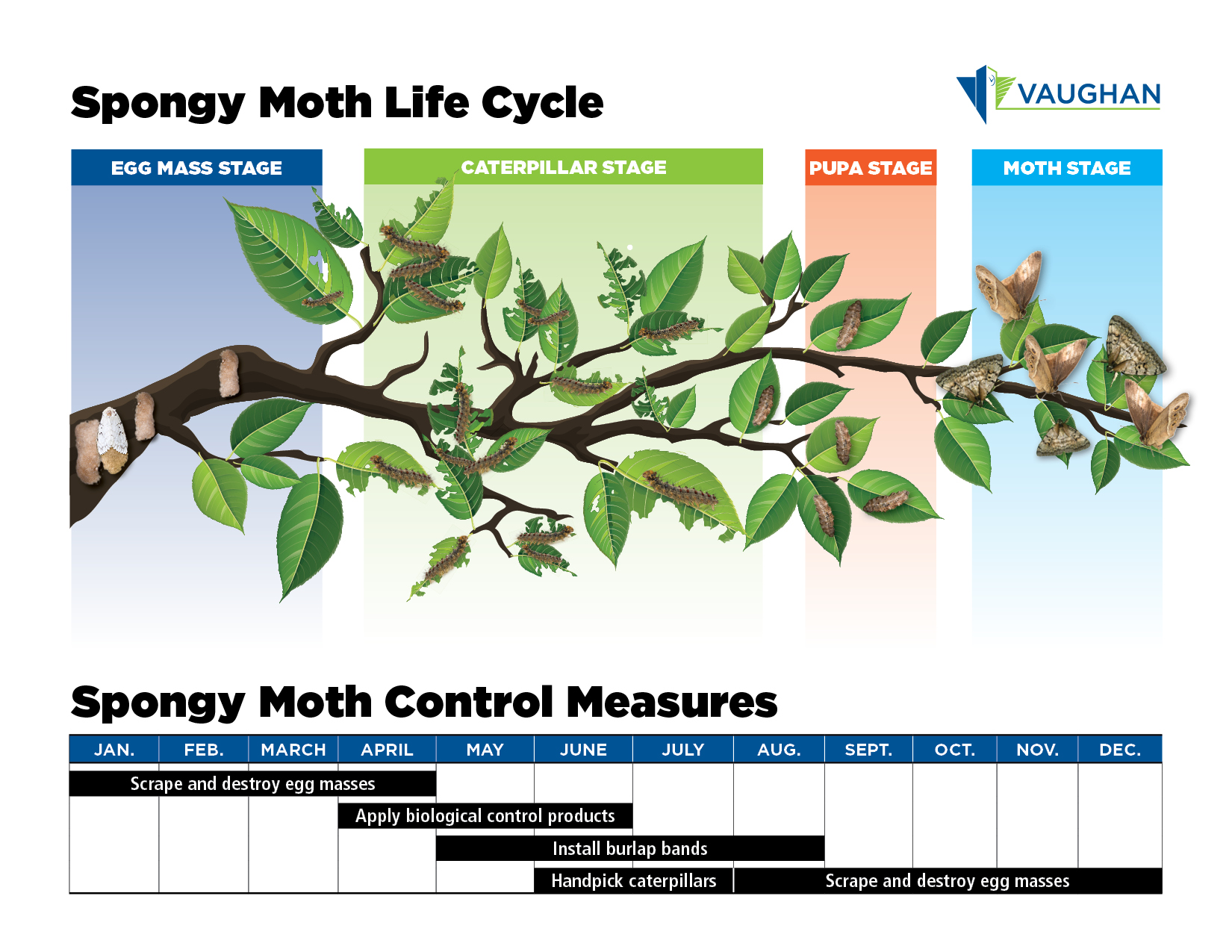About Spongy Moths
Learn more about Spongy Moths below.
Why is it called the “spongy” moth?
The spongy moth is formerly known as the Lymantria dispar dispar (LDD), European or Asian gypsy moth. This new common name was selected by a working group of 50 scientists and professionals from Canada and the United States following an extensive public consultation process. “Spongy moth” acknowledges the conspicuous, spongy egg masses that the insect produces. In line with other organizations, the City of Vaughan has adopted “spongy moth” and will be using this term moving forward.
What do spongy moths look like?
As egg masses, they are fuzzy, oval and light brown. As caterpillars, they are dark-coloured, hairy and have a double row of blue and red spots down their backs. As moths, males are light brown in colour and females are white and do not have the ability to fly.
Where did spongy moths come from?
Spongy moths originated in Europe. They were first detected in Ontario in 1969.
Why are spongy moths a problem?
While spongy moths are not harmful to humans, they can cause severe defoliation. Most healthy trees will survive several years of defoliation, but unhealthy trees have less reserves to regrow a second crop of leaves and will be less resilient to repeated defoliation.
What is the lifecycle of a spongy moth?
Spongy moths have four life stages:
- egg mass (August to May)
- caterpillar (May to July)
- pupa (June to July)
- moth (July to August)
Egg masses remain in place all winter and hatch the following spring from late April to mid-May. Once hatched, the caterpillars begin to feed for approximately seven weeks. The pupae are formed once the larvae have matured. They then transition to the moth stage, which is short-lived and seen in mid-summer. Both sexes then die after the female lays its eggs on the limbs and trunks of trees, on rocks, buildings or in other sheltered areas.
For more information on spongy moths, visit the Entomological Society of Canada (ESC), the Government of Canada, the Government of Ontario, Toronto and Region Conservation Authority (TRCA) and York Region.
Learn more about how to control spongy moths and what the City is doing to control them as well.
Learn about the spongy moth life cycle (PDF).

